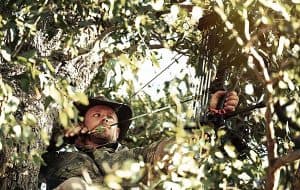Bird Hunting in Namibia – Wing Shooting
Namibia, with its vast and diverse landscapes, is a haven for hunting enthusiasts seeking a unique and challenging experience. The country’s rich biodiversity and commitment to sustainable hunting practices make it a prime destination for those in pursuit of plains game. From the arid expanses of the Namib Desert to the lush savannas, Namibia offers a remarkable array of game species. In this article, we will delve into some of the most commonly hunted plains game species in Namibia. Contact us to learn more about Burchell-Wolf Safaris Namibia

Kudu (Tragelaphus strepsiceros)
The majestic kudu, with its spiraled horns and distinctive markings, is a highly sought-after trophy in Namibia. Renowned for its elusive nature, the greater kudu inhabits a variety of terrains, from dense woodlands to open plains. Hunters often find themselves challenged by the keen senses of this iconic antelope, making the pursuit an exhilarating experience.
Springbok (Antidorcas marsupialis)
The springbok, Namibia’s national animal, is an integral part of the country’s hunting landscape. Known for its remarkable speed and agility, the springbok provides hunters with an exciting chase across the arid plains. The striking contrast between its white face and reddish-brown body makes the springbok not only a thrilling target but also a visually stunning trophy.
Gemsbok (Oryx gazella)
A symbol of resilience in the harsh desert environment, the gemsbok is a prized plains game species in Namibia. Recognizable by its long, straight horns and distinct black facial markings, the gemsbok roams the arid regions, showcasing its adaptability to challenging conditions. Hunting gemsbok requires skill and patience, as these animals are known for their keen awareness and ability to cover vast distances.
Hartebeest (Alcelaphus buselaphus)
The hartebeest, characterized by its uniquely shaped horns and distinctive appearance, is another popular plains game species in Namibia. With a preference for open grasslands, hunters often encounter these animals in groups. The hartebeest’s sharp eyesight and keen sense of smell make it a challenging target, adding an element of excitement to the hunt.
Ostrich (Struthio camelus)
Namibia’s plains are also home to the flightless but swift ostrich. While not a traditional “trophy” animal, the ostrich provides a different kind of hunting experience. Pursuing these large, fast-running birds requires skill and precision, making them a unique addition to a hunter’s portfolio.
Warthog (Phacochoerus africanus)
For those seeking a mix of challenge and humor in their hunt, the Warthog is an excellent choice. With its distinctive facial warts and imposing tusks, the warthog presents a formidable yet entertaining target. Hunting warthogs often involves tracking them through the savannah and engaging in a test of wits with these crafty creatures.
Namibia’s commitment to sustainable hunting practices, coupled with its breathtaking landscapes, makes it a premier destination for plains game hunting. The species mentioned above represent just a fraction of the diverse array of game that roams the Namibian plains. Whether it’s the regal kudu, the speedy springbok, or the resilient gemsbok, each species offers a unique and rewarding hunting experience.
If you are considering embarking on a plains game hunting adventure in Namibia, it is crucial to engage with reputable outfitters who prioritize ethical and sustainable practices. One such outfitter is Burchell-Wolf Safaris, located in Outjo, Namibia. With a commitment to conservation and responsible hunting, Burchell-Wolf Safaris provides a memorable and ethical hunting experience in the heart of Namibia.
As the sun sets over the vast Namibian plains, hunters can reflect not only on their achievements but also on the importance of preserving this extraordinary ecosystem for future generations. Namibia stands as a testament to the harmonious coexistence of wildlife and responsible hunting, ensuring that the thrill of the chase remains an enduring part of its cultural and natural heritage.
